A brief recent history of the indigenous Nkone cattle of Zimbabwe

Article contributed by George Hulme, March 2023.
The history of the people is the history of their cattle
The disturbances in Zululand and environs; the “Mfecane” that drove away many Zulu tribes from King Chaka’s Zululand, affected a large sector of the Nguni Zulu, known as the Ndebele, under their leader Mzilikazi Khumalo. Mzilikazi had an altercation with Chaka over the ownership of captured cattle. Chaka, King of the Zulus, defeated him in battle, forcing him to move to the west and into the Orange Free State with his people in 1823. Mzilikazi and his warriors took as many of their multi-coloured Nguni cattle with them as they could on this journey, attacking and disrupting other tribes over a large area. After some years he moved north into the Transvaal defeating and conquering the various tribes he encountered. Wherever they journeyed or settled, the Ndebele never ceased to raid cattle from other tribes, adding to their own cattle. Cattle rustling was a long established and traditional way of life for the Nguni tribes. In 1831 mounted Griqua raiders stole a large number of Ndebele cattle and after a long chase, the Ndebele attacked and soundly defeated the Griqua, reclaiming their cattle. After King Mzilikazi won this decisive battle against the Griqua nation, the Ndebele settled in Griqualand.
By about 1836 Afrikaner Voortrekkers began to arrive in Ndebele territory and in confrontations between the Afrikaners and Ndebele, the latter suffered heavy losses from the better armed and mounted Afrikaners, including the loss of thousands of their cattle. It was different in 1836 at the battle of Vegkop; the attacking Ndebele were defeated by the Voortrekkers led by Hendrik Potgieter but the Ndebele got away with over 5 000 head of the Afrikaner’s cattle and 50 000 sheep and goats. Further attacks and cattle raids in the years after 1836 by the Afrikaner Voortrekkers forced Mzilikazi to keep moving, and by early 1838 King Mzilikazi and 15 000 of his people and remaining cattle (including recaptured cattle) were forced to go northwards across the Limpopo River into modern Botswana and then north eastwards towards modern Zambia.
King Mzilikazi and his militant tribe of cattle owners eventually settled in Matabeleland near modern Bulawayo. From his new capitol Mzilikazi created the Mthwakazi Kingdom which incorporated the resident Lozi (Bakalanga) people in the area under his control.
Disturbances between the Matabele and Colonial forces escalated into war in 1893 and the British South Africa Company Forces invaded what was then known by them as Matabeleland. The invasion was opposed and fierce battles took place between the two forces while the better armed and equipped Europeans, although outnumbered, relentlessly pushed on to Bulawayo, the Ndebele capitol, despite severe opposition from the Ndebele army. King Lobengula and many of his tribesmen left Bulawayo, burning the town, before the colonists reached there and he made his way to the north across the Shangani River. After a battle just across the Shangani, where a BSA Company force led by Major Alan Wilson was totally wiped out by the Ndebele, King Lobengula continued northwards and disappeared, dying there from smallpox where he was buried by a few loyal followers at a secret place in that remote wilderness area near the Zambezi. The “Kings Cattle” of the typical Nkone type were moved and well-hidden in the vast heavily forested areas in the vicinity of the Gwaai River.
The British South Africa Company took over the administration of Matabeleland and distributed land and cattle to the Colonials. The Europeans of the BSA Company were not impartial to the beautiful Ndebele Nkone cattle and soon showed that they too, were on a par with the Ndebele, Mashona and the Afrikaners when it came to helping themselves to cattle belonging to others. The cattle were confiscated as “spoils of war” and “compensation”. Many of the cattle were apparently identified as “cattle of the King” and branded with the BSA Company brand, in an attempt to legitimise the takeover as “spoils of war”, although many cattle owned by individuals were also taken. This caused great bitterness as there was nothing worse for a Ndebele than the loss of his prized cattle. It is recorded that 300000 to 500000 head of Ndebele cattle were confiscated. Peace was made and some form of normality returned to the Ndebele nation but now with the Europeans in control.
In 1896 war (The First Chimurenga) broke out in Mashonaland when the Mashona people rose up against the colonial European settlers. This escalated and later that year the Ndebele too rose up against the European colonisers (The Umvukela). Rinderpest broke out in 1896, killing hundreds of thousands of cattle and wildlife south of the Zambezi River. This was coupled with a major locust invasion and the Europeans were accused of being responsible for the scourges, which helped to add to the unrest, particularly in Matabeleland.
The Rinderpest was followed by East Coast Fever in cattle imported from Australia, Mozambique, Kenya, and Tanzania a few years later in 1901-1903, to restock the region after the Rinderpest, also resulting in a massive die-off of cattle leaving less than about 50 000 head in the whole country. There could have been only very few Nkone cattle left in Matabeleland and it is a wonder and great credit to the breed and the Ndebele people that enough survived as a breeding nucleus to repopulate a large area of Matabeleland with their unique phenotype. Is it possible that the Nkone was, to some extent, resistant to both plagues?
Unfortunately, very few Commercial farmers of those times appreciated the tremendous value of the indigenous Nkone, or for that matter, any of the indigenous Sanga breeds which had become adapted to harsh conditions and built-up disease resistance over hundreds of years. For many years, the majority of farmers strove to “improve” the indigenous cattle by introducing European breeds to “grade them up”. This was a complete disaster, the exotic introductions and their progeny after the first generation, could not handle the harsh conditions or disease challenges and the majority died out, leaving a negative legacy of now diluted but originally very valuable pure indigenous genetics.
A few enlightened farmers selected and bred up their pure indigenous cattle breeds, one of these being the Nkone. The pure Nkone also thrived in more remote areas of Matabeleland where the Ndebele cattlemen selected for pure Nkone types and were reluctant to part with them. Rhodesia became a largely agriculturally based economy and cattle production played a major part. The Nkone, Mashona and Tuli indigenous breeds became more important as time went on and their excellent qualities and high productivity in the natural environment eventually became well known and appreciated.
By 1933 it became apparent to Government Animal Husbandry Officers that none of the imported cattle breeds introduced to “improve” local indigenous cattle had become adapted to the environment and were totally unsuitable. Some progressive thinking resulted in cattle breeding experiments being initiated at Matopos Research Station in 1938 to find the most suitable type of cattle and breeding systems for local conditions. In the 1940’s Government sponsored the establishment of Mashona, Tuli and Nkone herds and by 1950 eight breeding units were operating with a total of 1732 indigenous Sanga cattle. The Tuli were based at Tuli Breeding Station near Gwanda and the Nkone at Tsholotsho Breeding Station. In the meantime, private individuals, F.B. Willoughby, and E.A.B. Mc Leod, purchased Mashona cattle to form two foundation Mashona herds. Len Harvey was put in charge of the Tuli and John Brownlee of the Nkone.
Interest in indigenous Nguni cattle occurred in South Africa at this time and Government herds totaling 500 Nguni cattle were established in Tribal Areas of South Africa to maintain the purity and ensure the survival of the breed. In 1946 a small herd of Nkone was established at Tsholotsho Breeding Station, north-west of Bulawayo, under the direction and management of John Brownlee. This herd was disbanded in 1949 due to an outbreak of contagious abortion. A few non-reactors were retained and these formed the nucleus of a dual-purpose project with initial emphasis on milk production.
Similar objectives pertained to the establishment of a second Nkone herd at Msengezi Experiment Farm in Mashonaland in 1953. Here research was carried out mainly on milk production and resulted in comprehensive and valuable information collected on the Nkone milking ability. The selection for milk production then has had a positive impact on the milking ability of the Nkone female until today. Msengezi was closed and the herd moved to Tsholotsho in 1963.
Subsequent work on beef production in the Nkone breed was carried out at an expanded Tsholotsho Experiment Station. The original 800-hectare station was increased by another 5 200 hectares in 1963, eventually running a herd of 800 Nkone cattle. Initial efforts at acquiring phenotypical Nkone for stocking the new area were thwarted by local Ndebele breeders refusing to part with their better, highly prized Nkone breeding stock of which they were immensely proud. This resulted in a very mixed bunch of breeding females being initially acquired. The Tsholotsho Nkone herd became a closed herd from 1963. Strict selection and management practices under the continued direction of John Brownlee were implemented and comprehensive records kept with the emphasis always on desirable traits such as fertility, milk production and ease of calving, growth, mature size and adaptation to local conditions. A herd of Tonga (Govuvu) cattle was also once kept at Tsholotsho Breeding Station.
Examples of Nkone Cattle
Photo credit: George Hulme - Nkone Cattle Breeders Society of Zimbabwe
Commercial agriculture and the cattle industry flourished in this country during the 1960’s to the 1990’s and the Nkone breed played its part in the exceptional agricultural growth and productivity. In the mid 1960’s to the 1970’s, there were over 25 registered breeders of Nkone and 800 Nkone cattle registered in Zimbabwe.
The Tsholotsho Nkone herd was moved to Matopos Research Station in 1977 due to the Civil War, where descendants of John Brownlee’s foundation herd still exist and were until recently (2019), one of only two registered herds left in Zimbabwe. There were a considerable number of ranchers in Matabeleland and the Midlands who bred pure and crossbred Nkone cattle during the period from the early sixties until 2001 when Land Reform destroyed commercial agriculture as it was then. It has been estimated by Maule and Willoughby that there were 15 000 to 20 000 Nkone cattle in Zimbabwe during the 1970’s.
Mlezu Agricultural College in the Midlands, founded in 1958 had an excellent Nkone herd for many years. The first Principal of Mlezu, the late Fritz Meyer, was a great supporter of the breed and went on to establish his own Moyo Ranch in 1974 where he kept a very good Nkone herd. After Fritz died, his daughter Annette took over Moyo Ranch where she worked closely with surrounding communities providing heifers and swapped her bulls for their aged bulls. Annette also exported a parcel of in-calf Nkone heifers and an Nkone bull to Graca Machel, wife of the late Samora Machel, President of Mozambique, in the 1990’s. (Graca Machel later married Nelson Mandela, President of South Africa). Also, in the Midlands in the Seventies was another important Nkone herd, that of Peter Seymour-Smith on Iwaba Ranch near Rhodesdale. This herd was then sold to Tim Savory on Loozani Ranch where it continued to flourish. Another long-term breeder still active is Mike Stone of Red Rose farm at Esigodini. John Dudman’s unregistered herd at Figtree is also of great importance to the future of the Nkone, many of his cattle originating in Northern Matabeleland. There are many more names of people and breeders but it is impossible to refer to everybody concerned, even if I could find references to them. They all played their part in the Nkone story.
A large commercial Nkone crossbred herd still operating is that at Debshan Ranch at Shangani where they run over 1,000 crossbred breeding cows as well as 150 pure bred unregistered Nkone breeding cows. Debshan, John Dudman’s unregistered herd, and the Matabeleland small-scale and communal farmers will play a large part in the future breeding of Nkone by providing a valuable source of Nkone genetics.
The 74-year-old Matopos Research Station Stud and the Pattullo’s 55-year-old Anglesea Stud which also originated with breeding stock from John Brownlee’s Tsholotsho herd in 1965 are the oldest registered herds in the country, and until very recently, the only two left in Zimbabwe.
Nkone cattle are one of the three Zimbabwean indigenous Sanga breeds and a valuable component of both the beef industry and agriculture in Zimbabwe in the future. It is imperative to conserve and save the Nkone breed to ensure that its irreplaceable and uniquely adapted genetics continue to contribute to the future of the beef industry in Zimbabwe and Southern Africa, as well as internationally on other continents.
The Nguni Cattle Society of Zimbabwe, despite every effort to keep it going, had become defunct and, until very recently, put in mothballs. We should take this opportunity to thank all breeders and the Nguni Society for bravely and resolutely weathering the many problems that they faced in the past and despite that, keeping their herds intact and the Society functioning until it became humanly impossible to do so any longer. I salute the Nguni/Nkone breeders of past years and their first-rate efforts in saving the Nkone breed.
Efforts are now being made to resuscitate the Nguni Cattle Society of Zimbabwe and both past and new breeders are joining together to do this. Although numbers are low it is hoped that the numbers of cattle and breeders will steadily increase from now on; not only registered breeders, but those in the Communal and Small-Scale areas too. I had personally hoped to see the Breed and Society name changed back to Nkone from the change to Nguni in 1999; to me, the name Nkone reflects more accurately the history of the breed and the differences with the parent South African Nguni cattle ecotype. I am pleased to say that is now a reality and a recent vote of the new Society has changed the official name to the Nkone Cattle Breeders Society of Zimbabwe and the official breed name back to Nkone.
The Nkone cattle in the communal areas of Matabeleland should be fully utilised (before we lose these genetics), by commercial farmers and those in the communal and small-scale areas, to make use of the Societies grading up scheme, using registered bulls. This will greatly benefit everyone concerned and at the same time increase Nkone numbers and widen the Gene pool. Improved, selected, and adapted Nkone will increase production, either as purebreds or crossbreds, in Communal and Small-Scale sectors. The Nkone cow as the “mother line” in any crossbreeding programme is outstanding.
In 2019 the Zimbabwe Herd Book had only 2 registered Nkone breeders left, one a Commercial Breeder and the other a Government Research Institute. This increased to 4 registered breeders that year, two Commercial, one Government and one a Community Project. They had a total of about 150 registered Nkone breeding cows between them, still a very precarious situation, making the registered Nkone cattle of Zimbabwe very vulnerable to total extinction.
The present position of The Nkone Cattle Breeders Society of Zimbabwe is as follows:
- Registered Breeders 7
- Society Members total 15.
- There is an elected interim committee of 5.
- There are now approximately 609 registered breeding cows.
There is a total of about 1,500 unregistered and crossbred Nkone type breeding females owned by those commercial farmers and Government Institutions that answered a recent questionnaire. There could very well be a few hundred more in this category.
The numbers of Nkone type cattle in the Communal and Small-Scale Sectors are unknown but there are possibly a reasonable number of good Nkone in more remote situations. (In the 1970s it was estimated that there were 15,000-20,000 Nkone cattle in Zimbabwe and I should think that with the general decline in the National Herd over the last two decades, the Nkone numbers too, have declined). The communal and small-scale Nkone cattle, including the Savé Valley Gaza-Nguni, being fully adapted to production under harsh conditions, are an extremely valuable resource as a large Gaza/Nkone/Nguni Gene pool for upgrading. Selecting good female breeding stock from these areas and then upgrading them by using registered purebred bulls is a very viable option for new breeders, large-scale, small-scale and communal alike.
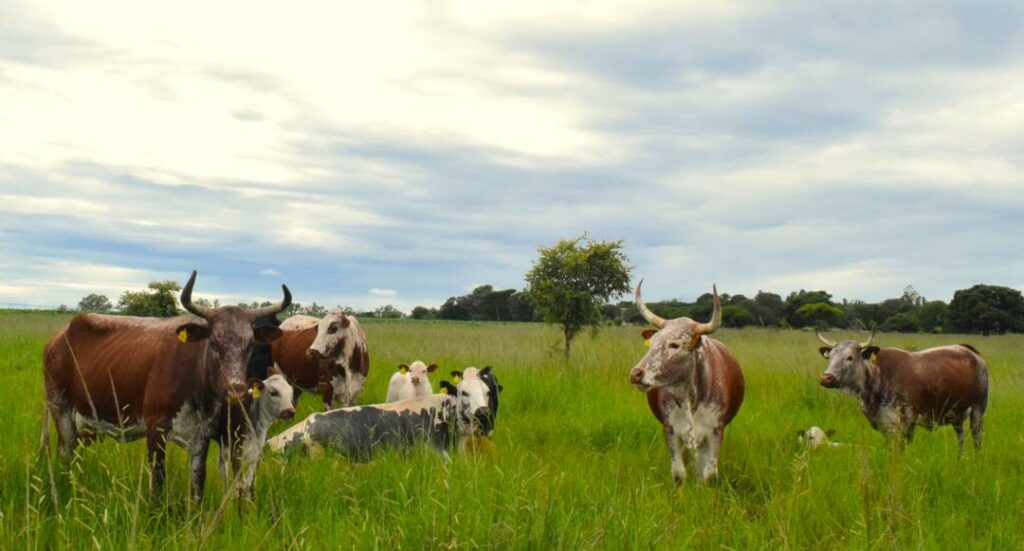
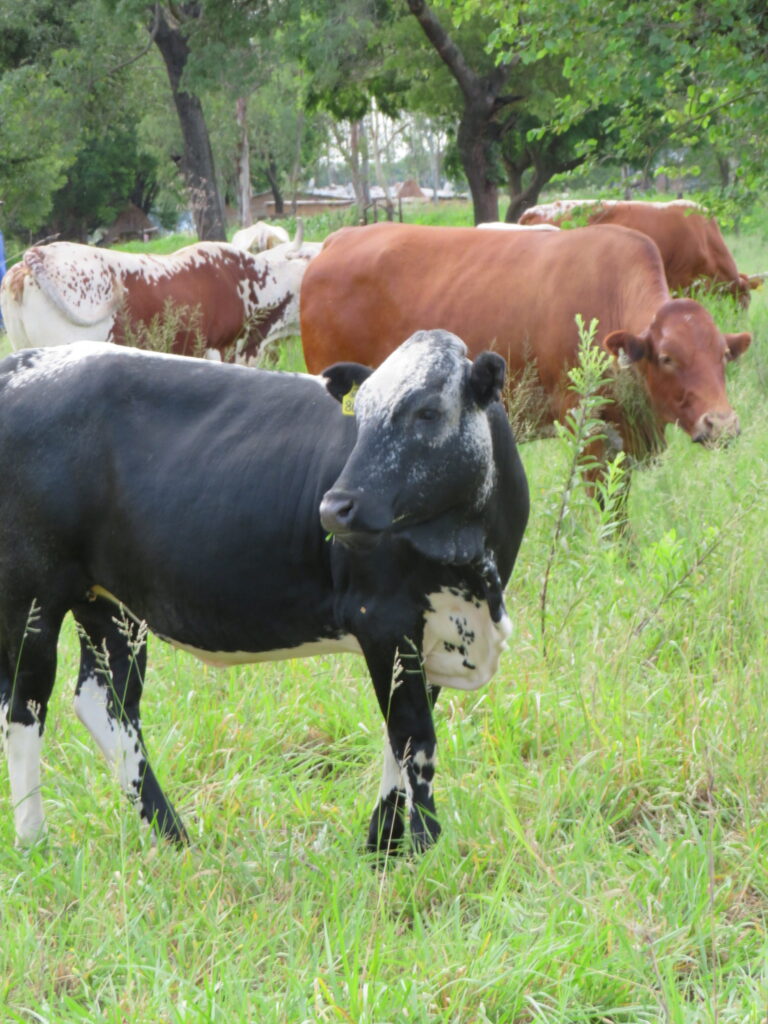
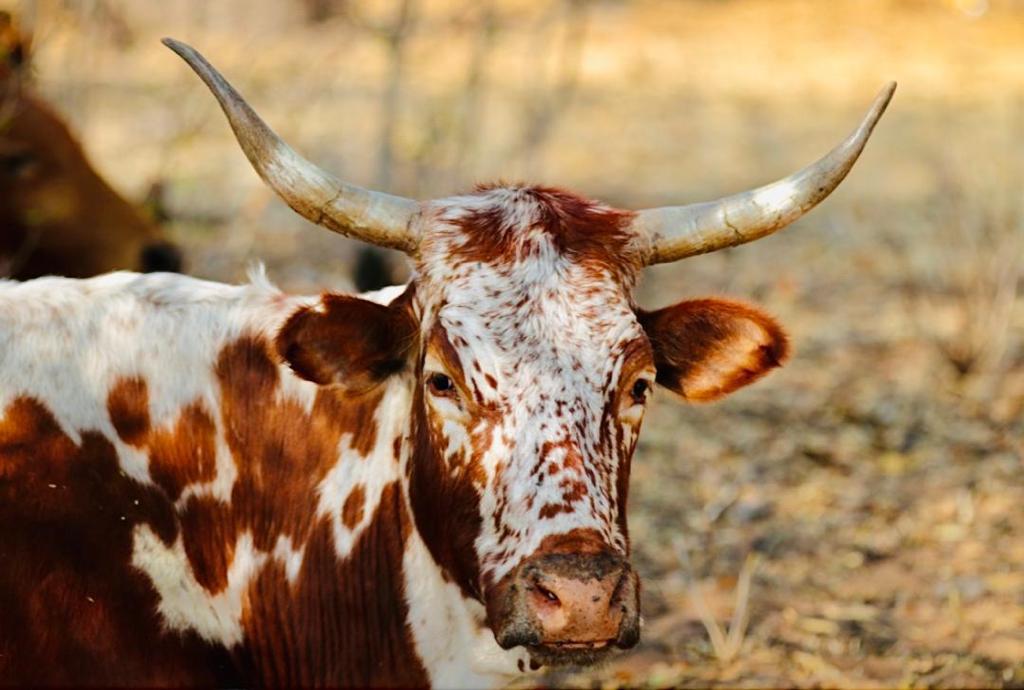

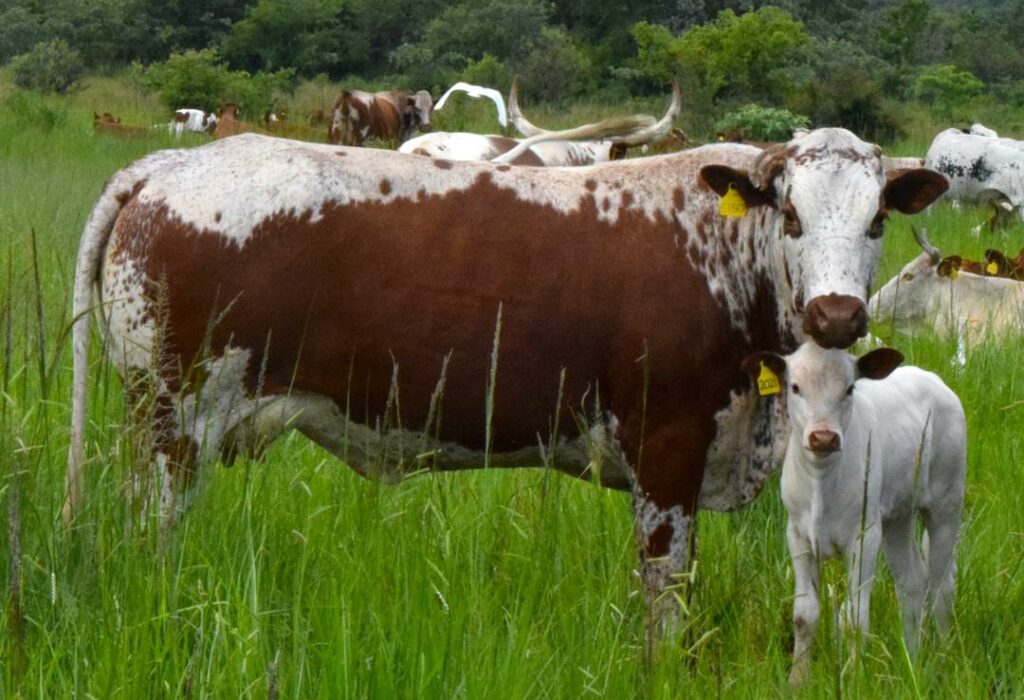
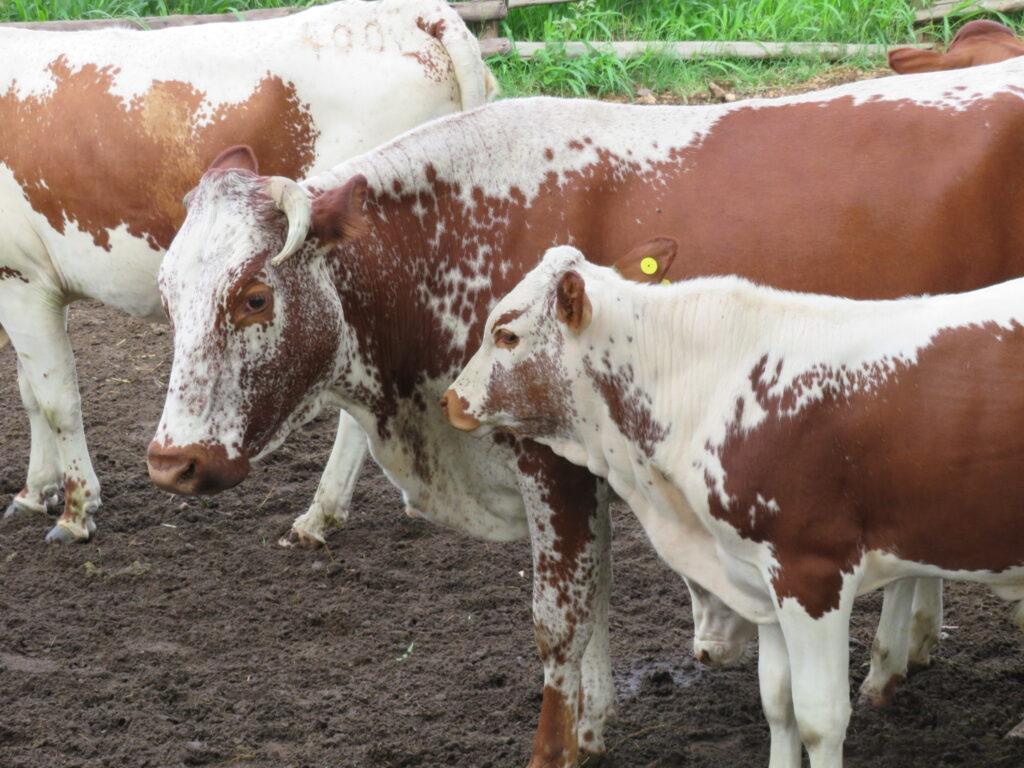




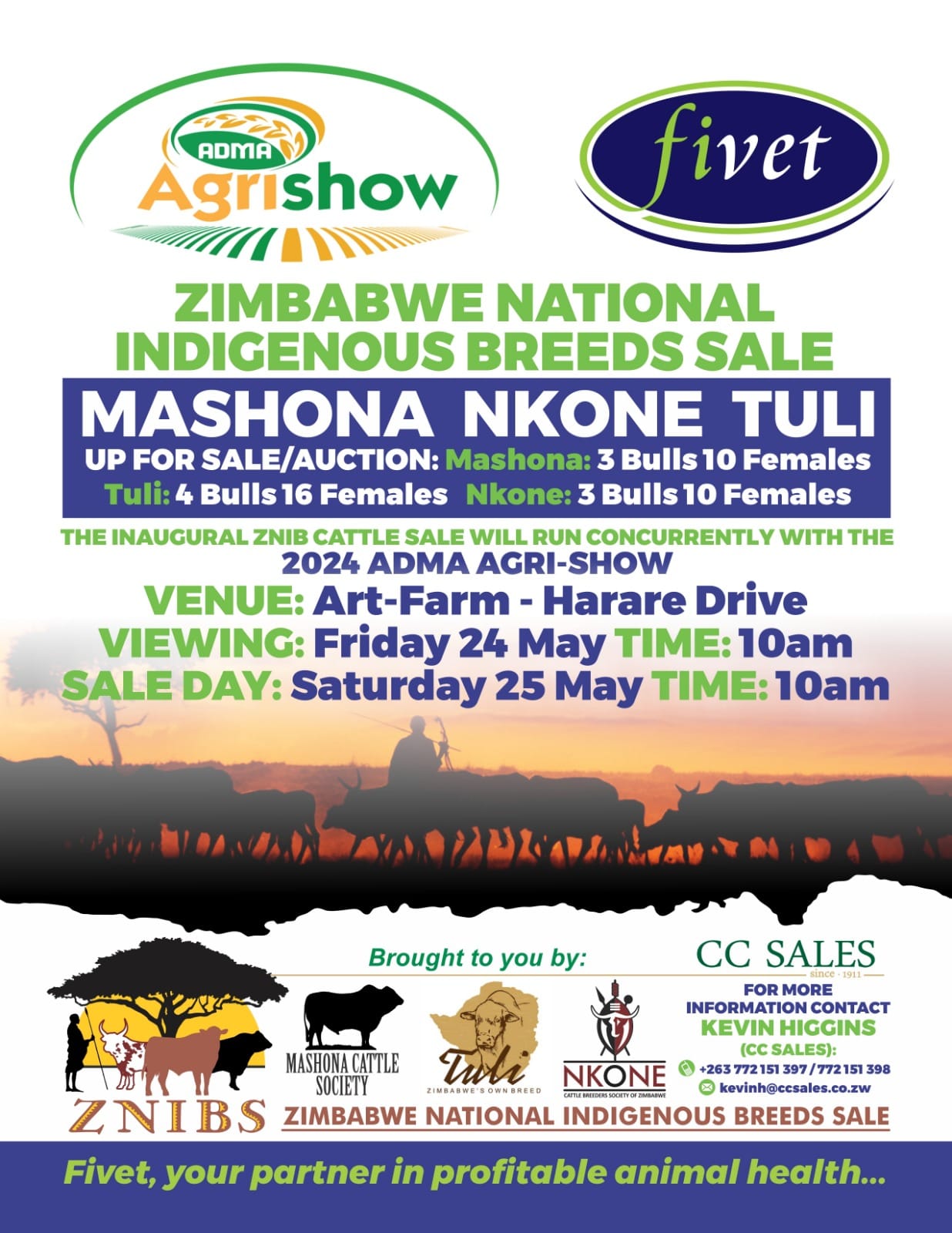

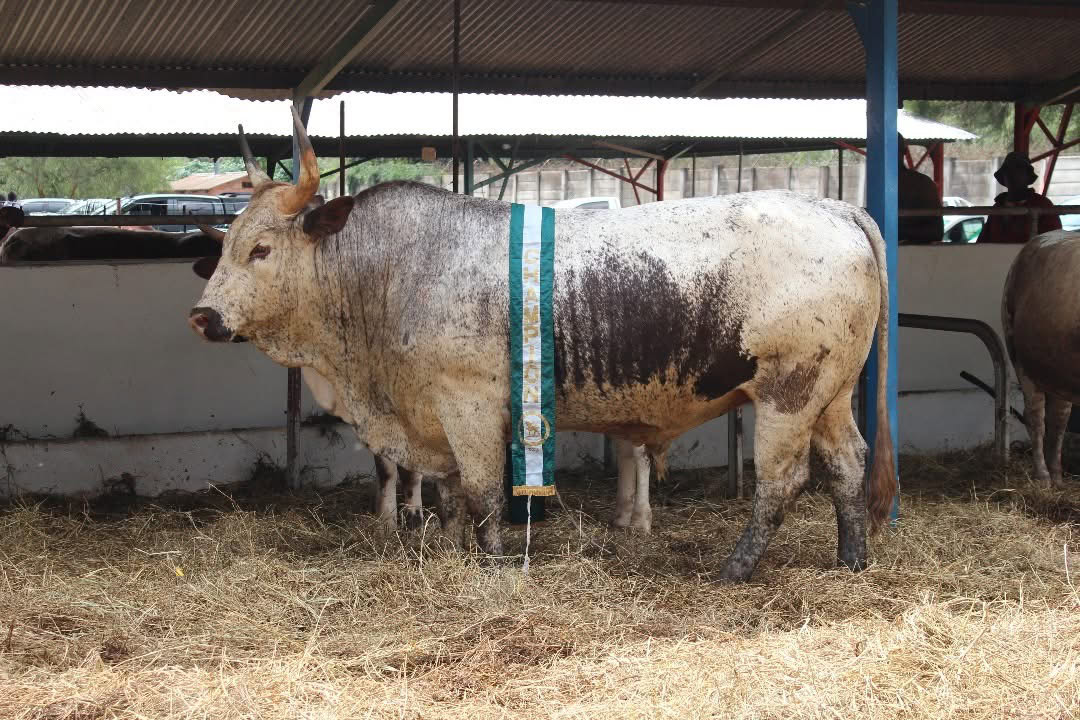
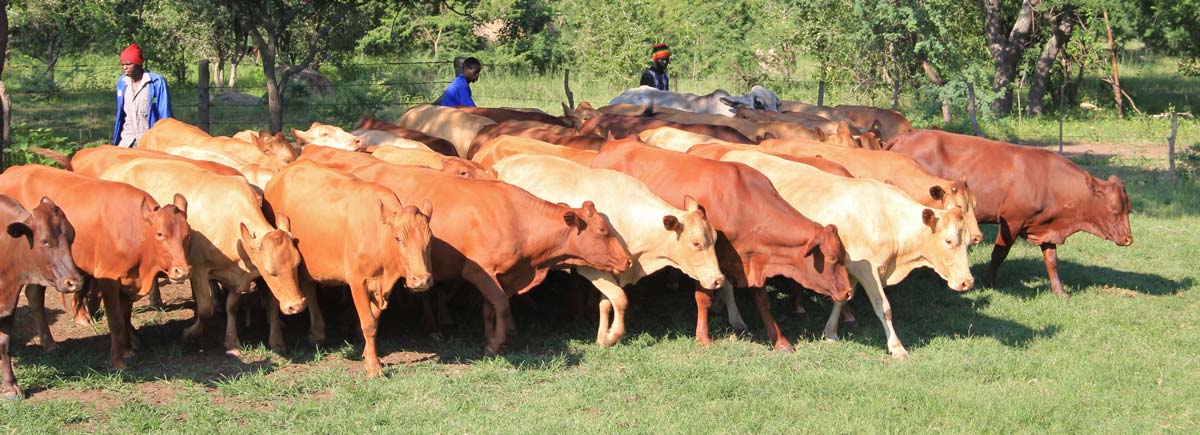
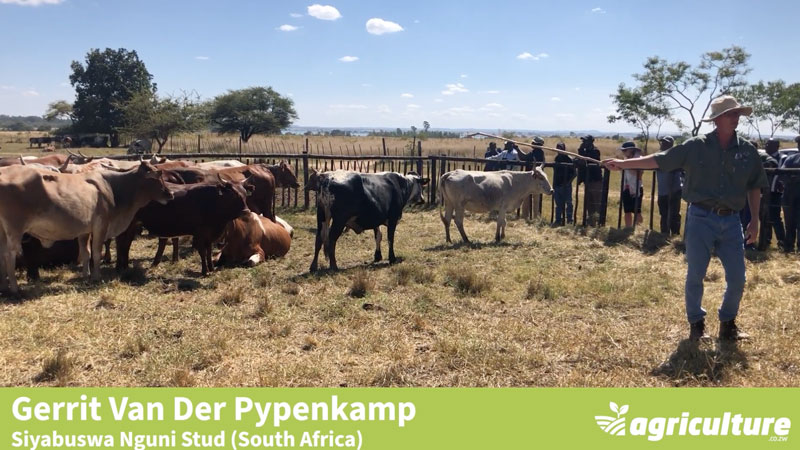
Very very informative indeed.